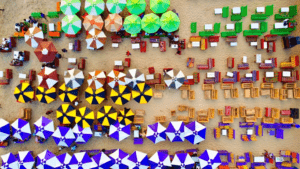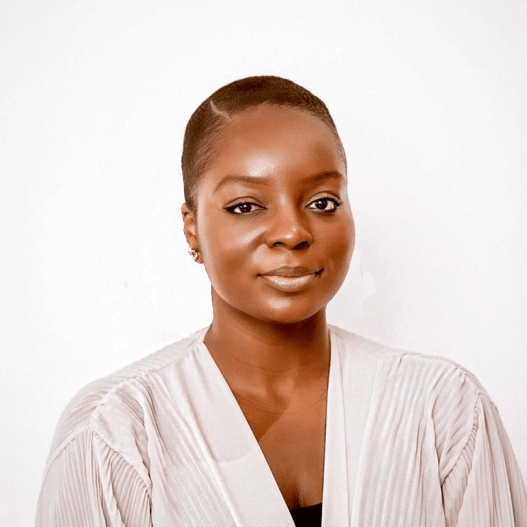Creative economy

Mention of the Creative Industries in Ghana usually conjures up images of film, music, art, and their associated celebrities or public figures. Oftentimes, it is these more tangible and experiential artistic expressions that are the access point for engaging with the Arts. But what exactly is meant by ‘Creative Sector’, ‘Cultural and Creative Industries’ and furthermore the ‘Creative Economy?’ Is there more than meets the eye? This monthly column will explore the state and potential of the Creative Economy in a Ghanaian context, and highlight key figures making impact both locally and globally.

Definitions
The definition of the ‘Creative Economy’ is one that continues to expand and develop. It is described by UNCTAD as ‘the sum of all the parts of the Creative Industries, including trade, labour and production’. Used interchangeably with the ‘Creative Sector’, the ‘Creative Industries’ officially comprise of advertising and marketing, architecture, arts and crafts, design, fashion, film, video, photography, music, performing arts, visual arts, museums, galleries and libraries, publishing, research & development, software, computer games, electronic publishing, and TV/radio. Essentially, the ‘Creative Economy’ also captures the wider ecosystem of contributing sectors and services that make the production and consumption of these creative outputs possible. Be it the legal sector and its influence on intellectual property, Science and technology developments in materiality, or trade and export infrastructure affecting access to international markets, the Creative Economy takes a multifaceted approach to capture the story of both the impact and potential of the Arts. The Creative Economy is also an important source of both commercial and cultural value. UNESCO’S 2013 Creative Economy Report 2013 states that the sector is intimately bound up in the imagining and generation of new ideas, products or ways of interpreting the world that have monetary and non-monetary benefits, which can be recognized as instrumental to human development.

Local Value
For many of us, these artistic touchpoints offer reference to aesthetics, leisure and even luxury. One may then wonder: how exactly does the Creative Economy relate to our challenges as a nation, and impact on the day-to-day life of the average Ghanaian? As one gentleman put it, ‘It be art we go chop?’ The question of value is a common one that even plagues some of the more ‘developed’ nations. What has been evidenced though, is the impact of creative outputs on physical and mental wellbeing, nation building and identity, trade development, livelihood and employability. It is also intrinsic to soft power. In politics and international relations, we know this to be the ability to influence and persuade using attraction as opposed to coercion, payment or even force.
In the Ghanaian context, the Year of Return provides a tangible example of this. Leveraging on the whirlwind rise of Sub Saharan African culture in the mainstream, there has been an increase of the repatriation of people from the African diaspora to Ghana in particular, with the impact on GDP reported to be in the millions (or even billions) of dollars.
African Political and Social Development expert Liban Soleman shares that in recent years, ‘African creative outputs have generated more export revenue that cotton, coffee and cocoa put together. The talent speaks.’ Although there are huge challenges in sourcing accurate data, a picture of value is emerging. This then begs the question of how we can better harness the sector, to positively impact the lives of all.

Global Ghana
While formal scope and statistics on the Ghanaian Creative Economy are limited, it is evident that the Creative and cultural industries are gaining traction across the continent as a whole. There is also increased recognition of the potential to harness the might of this sector for socio-economic development, while securing a more prominent place on the ‘global stage.’ The role of digital spaces and social media has been a huge leveller in this regard.
In Ghana, we have gained worldwide fame for our music, from the days of highlife to the modern-day transformation of afrobeats. Our visual artists and fashion personalities have also known global success for many years, as is evident in the success of the Ghanaian diaspora worldwide. In developing a strong national identity, the creative sector provides us with the tools to tell our own stories. As America did with Hollywood, we have the opportunity to tell others who we are, while preserving the cultural legacies and traditions that belong to our various ethnic groups.

‘Design’ in and of itself is a creative solution to a problem or challenge. With this in mind, there is great potential in developing the creative sector. We can develop frameworks to not only entertain and attract, but also to address some of our shared challenges. The solutions that lie in the Creative Economy include areas such as architecture and housing deficit, sustainability and climate change, creation of new academic models, policy and financial infrastructures, and so forth. At the cusp of rapid technological advancements and in this season of increased global collaboration, Ghana is uniquely placed to leverage on the ‘buzz’ and case studies of other nations, taking an innovative approach to national development with its Creative Economy at the helm.
Ama is a Creative Consultant and founder of Chapter54, a boutique consultancy which exists to help bolster African Creative Economies through research and programming.
Email: [email protected]
Linkedin: https://www.linkedin.com/in/ofeibea/
Images courtesy of unsplash.com










